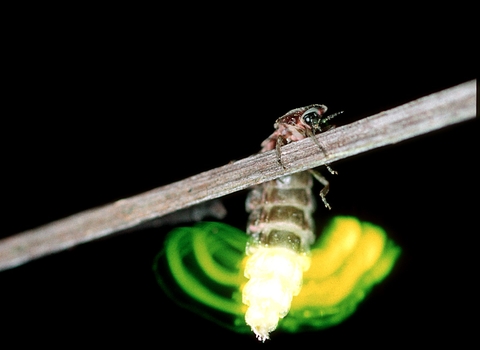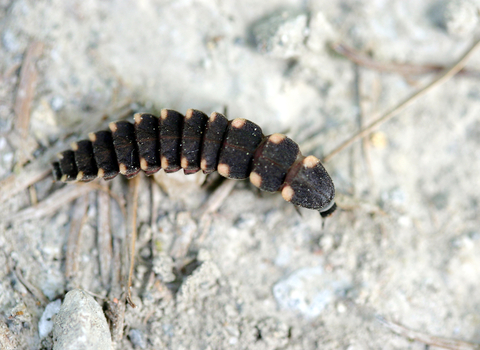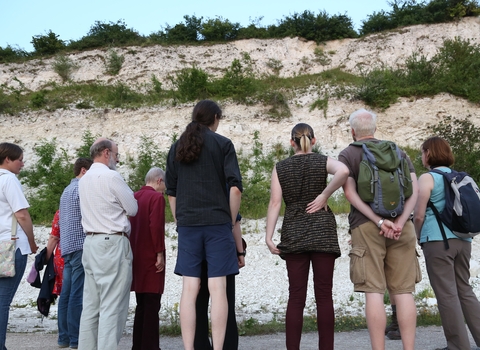
Glow-worm ©John Tyler

Glow-worm larva ©Jim Higham
Glow-worm
The glow-worm is not actually a worm, but a beetle. Males look like typical beetles, but the nightly glow of a female is unmistakeable - lighting up to attract a mate in the darkness of their grassland habitats. Look for the adults in summer.
Scientific name
Lampyris noctilucaWhen to see
June to JulySpecies information
About
The glow-worm is a medium-sized, narrow beetle. The males look like typical beetles, but the females have no wings and look similar to the larvae. Glow-worms are most often found as larvae, living under rocks on chalk or limestone grassland, and feeding on slugs and snails. Gardens, hedgerows, railway embankments, woodland rides, heathlands and cliffs are all possible habitats for glow-worms. Females are famous for emitting a greeny-orange light from their bottoms at night. They climb up plant stems and glow in order to attract males, who have large, photosensitive eyes - perfect for scanning vegetation at night. The larvae can also emit light, and so can the eggs. Adults are only around for a short period in June and July.How to identify
The male glow-worm is a light brown, typical beetle. The larva is greyish-brown with yellowy-orange triangular markings at the side of each segment. The female is similar in appearance to the larva, but is unmistakeable when she lights up at night.Distribution
Found in parts of England (particularly the south), lowland Scotland, and Wales.In our area
See these fascinating beetles at local reserves including Fulbourn Fen, Cherry Hinton Chalk Pits and at the Great Fen in Cambridgeshire; Pegsdon Hills and Hoo Bit and Totternhoe in Bedfordshire and Collyweston Quarries and Old Sulehay in Northamptonshire.
Did you know?
The larvae of glow-worms are predators, feeding on slugs and snails. They kill their prey by delivering a series of toxic bites, injecting digestive proteins that paralyse and eventually dissolve the soft body of the slug or snail. While the glow-worm is waiting for this process to happen, it might ride on the snail's back, keeping away from the sticky mucus it produces.See these fascinating beetles at local reserves including Fulbourn Fen, Cherry Hinton Chalk Pits and at the Great Fen in Cambridgeshire; Pegsdon Hills and Hoo Bit and Totternhoe in Bedfordshire and Collyweston Quarries and Old Sulehay in Northamptonshire.

